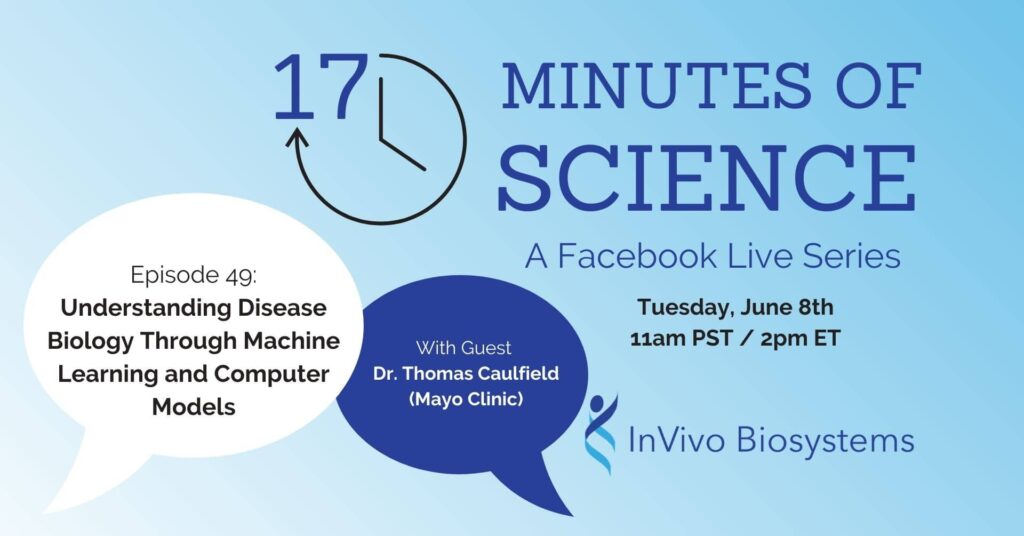Tune in weekly to our virtual series “Seventeen Minutes of Science” every Tuesday at 11am PST / 2pm ET where we go live on Facebook with a new guest each week to talk about how science and biotechnology is woven into their lives for (you guessed it) 17 minutes!
For episode 49 of 17 Minutes of Science, we sit down with Dr. Tom Caulfield to discuss how he uses machine learning and computer modeling to understand disease biology and model disease gene therapy targets. Dr Caulfield is an Associate Professor of Neuroscience at Mayo, in addition to being a Senior Associate Consultant to over half a dozen groups at the Mayo Clinic, ranging from Cancer to Neurosurgery to Genomics, giving him a wide breadth of experience and areas of expertise.
Dr. Thomas Caulfield has a research background in biochemistry, medicinal chemistry, biophysics, computational modeling and in silico drug studies. His long-term focus is on areas related to protein modeling and new drugs, such as structural studies of biomolecular targets, assessment of druggability, drug discovery (hit to lead through optimization) and de novo design.
His current research focuses include:
-Ribosomopathies, frameshifting and quality control mechanisms.
-VUS categorizations.
-SARS-CoV2 multidrug targeting.
-Method, drug and technology. development (quantum-based adaptive docking).
-Collaborative studies.
-Neurodegeneration.
-Dual inhibitors and heterofunctional drugs.
-Cancer collaborations.
-Brain cancers.
Through his accelerated drug discovery and research platform, Dr. Caulfield anticipates that small-molecule modulators for selected targets can be devised to help study the cellular pathways related to these targets. Dr. Caulfield’s ultimate goal is to develop novel pharmacological interventions that can prevent and treat diseases with clearly identified macromolecular targets.
Tune in to learn more from Dr. Caulfield.
Propel your drug discovery research into the future. Get in touch with us today to unlock the potential of our comprehensive drug discovery services and expedite the path to medical breakthroughs.

